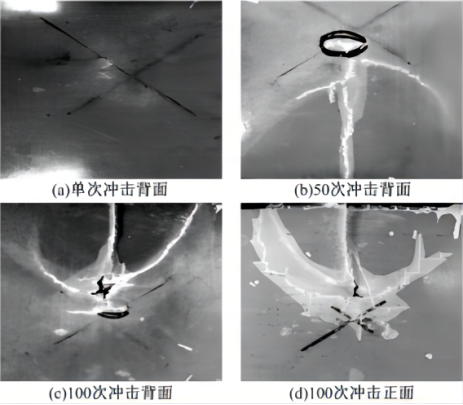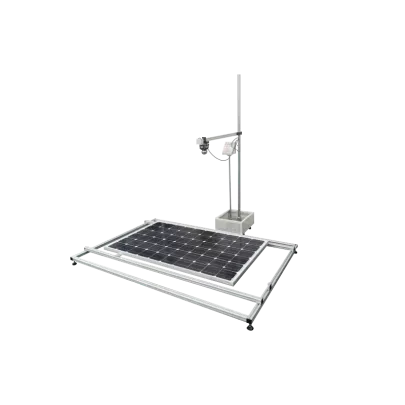
Quantum Efficiency Tester
PL/EL Integrated System
PV-Reflectumeter
3D Confocal Microscope
In-Line Four Point Probe Tester
Four Point Probe Tester
In-Line Thin Film Thickness Tester
Raman Spectrometer
FTIR Spectrometer
Spectrophotometer
Automatic Spectroscopic Ellipsometer
Contact Resistance Tester
Ultra depth of field 3D microscope
Auto Visual Tester
VMM PV Vision Measuring Machine
Solar Cell Horizontal Tensile Tester
Steady State Solar Simulator for Solar Cell
Solar Cell UV Aging Test Chamber
Solar Cell Comprehensive Tensile Tester
Visual Inspection Tester
Wet Leakage Current Tester
PV Module EL Tester
PV Module UV Preconditioning Chamber
Steady State Solar Simulator for PV Module
Current Continuous Monitor
Potential Induced Degradation Test
Bypass Diode Tester
LeTID Test System
Reverse Current Overload Tester
Impulse Voltage Tester
Hipot Insulation Tester
Ground Continuity Tester
Hipot Insulation Ground Tester
Damp Heat Test Chamber
Humidity Freeze Test
Thermal Cycle Test Chamber
Dynamic Mechanical Load Tester
Static Mechanical Load Tester
Hail Impact Tester
Robustness of Termination Tester
Module Breakage Tester
Cut Susceptibility Tester
Peel Shear Strength Tester
Universal Testing Machine (Single-arm)
Universal Testing Machine (Double-arm)
Glass Transmittance Tester
Acetic Acid Test Chamber
EVA Degree of Crosslinking Test System
Junction Box Comprehensive Tester
Drop ball tester
Semi-automatic scanning four-probe tester
Stylus Profilometer
Maximum Power Point Tracker
Perovskite Glass Transmittance Tester
Perovskite P1 Laser Scribing Multifunctional Testing Machine
Perovskite Online PL Tester
Perovskite Online Sheet Resistance Tester
Online Perovskite Film Thickness Tester
Perovskite Process Inspection Workstation
Portable IV Curve Tester
Portable EL Tester
Portable Thermal Imaging Tester
Solar Module Multi-Channel Testing System
PV Inverter Power Quality Tester
Drone EL Tester
IV Tester
IVEL Cell Sorting Machine
Falling Ball Impact Tester: Analysis of High-precision Impact Resistance Evaluation Equipment
Date : 2024-07-16Views : 200
In modern industrial applications, impact resistance is a key factor in ensuring product reliability and safety, especially in the fields of photovoltaic modules, tempered glass and junction boxes. Falling Ball Impact Tester is designed specifically for testing the impact resistance of these materials. Through a high-precision DC electromagnetic control system and a variety of steel ball weight options, the device can accurately simulate actual impact conditions and provide reliable test results. This article will delve into the basic principles, technical specifications, and its important role in quality inspection, demonstrating its outstanding performance in improving product quality and safety.

Basic principles of drop ball impact test
The drop ball impact test is an experimental method used to evaluate the mechanical properties and durability of materials when subjected to sudden impact. The test simulates the impact conditions that may be encountered in actual applications by dropping a sphere of a certain mass from a specific height and hitting the surface of the material being tested. The impact resistance of the material can be evaluated by analyzing the impact force of the sphere on the material, the deformation, damage and recovery ability of the material.

Damage shape records at different impact times
Measurement of impact force: The impact load time history curve generated during the drop ball impact is recorded by sensors (such as pressure sensors) installed on the specimen, and then the displacement time history curve and energy time history curve are calculated. These data help to understand the dynamic response and energy absorption capacity of the material when it is impacted.
Observation and analysis of material damage: Drop ball impact can cause cracks, deformation or other forms of damage on the surface or inside of the module. By observing and analyzing these damage forms, the crack resistance and fracture toughness of the material can be evaluated.
Effect of multiple impacts: For some materials, such as photovoltaic modules, multiple drop ball impacts may cause cumulative damage, which is manifested as a decrease in load peak, a decrease in rebound speed and an increase in absorbed energy. This cumulative effect is an important indicator for evaluating the long-term durability of photovoltaic modules.
Drop ball impact test is an important material performance test method. It evaluates the impact resistance of materials and improves the performance of photovoltaic cell modules by simulating the impact conditions in actual applications.
Purpose of the drop ball impact test
The drop ball impact test is to drop a steel ball of specified mass from different heights or drop steel balls of different masses at a specified height to determine the energy required for the sample to break and fail under the drop ball impact.
In order to ensure that the numerical calculation results obtained are reliable, the experiment first needs to verify the established finite element model. Under the condition of no residual stress, the drop ball impact strength at two critical heights of 46.5 and 251.5 mm (the drop ball heights corresponding to the complete and complete breakage of the sample after the drop ball impact) of the real drop ball impact test is simulated.
The numerical calculation results show that when the drop ball height is 46.5 mm, the substrate glass remains intact, while when the drop ball height is 251.5 mm, the substrate glass breaks and fails. At the same time, the broken morphology is consistent with the real test, and two cross main cracks extend outward from the impact area.

Substrate glass breakage morphology in experiments and simulations
Falling Ball Impact Tester is a high-precision device for testing the quality risks of modules, tempered glass and junction boxes. It uses a steel ball of specified weight to fall freely from an adjustable height (0-2000mm) to hit the test piece and observe its damage degree, so as to predetermine the impact resistance of materials and products. It adopts DC electromagnetic control to ensure the accuracy and stability of steel ball release.
Falling Ball Impact Tester
The Falling Ball Impact Tester is designed to detect quality fluctuations in modules, tempered glass and junction boxes.

E-mail: market@millennialsolar.com
·DC electromagnetic control system ensures accurate steel ball release
·Various steel weights meet different material and product requirements
·220V/50Hz power configuration ensures stable operation of the equipment in various evaluations
Falling Ball Impact Tester, with its high precision and stability, is an ideal tool for evaluating the impact resistance of photovoltaic modules, tempered glass and junction boxes. The equipment ensures accurate steel ball release through a DC electromagnetic control system and stable operation under a 220V/50Hz power configuration. Falling Ball Impact Tester not only improves product quality, but also provides key data support for material performance improvement, making it the best choice for quality testing.

































































